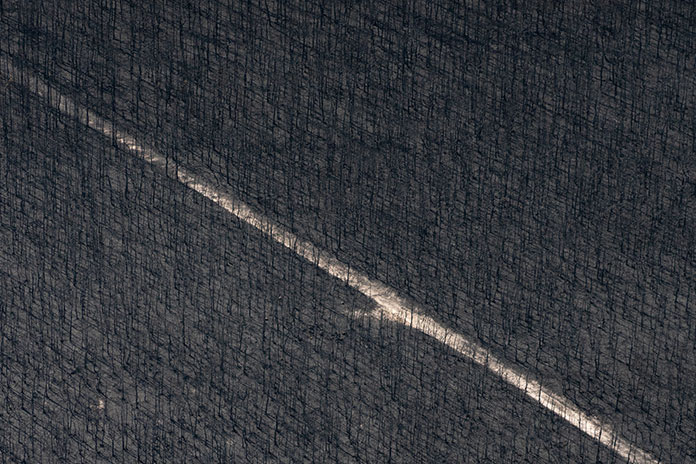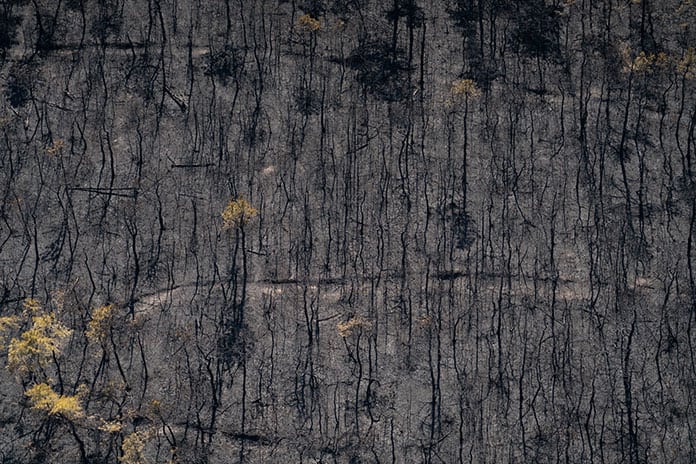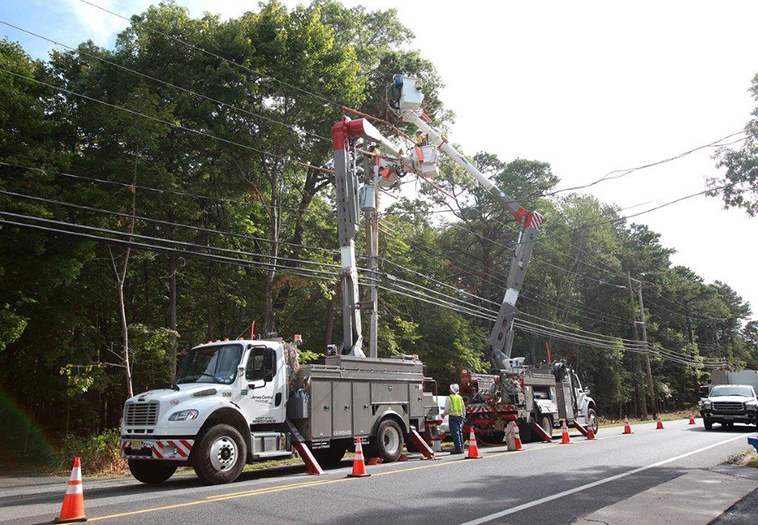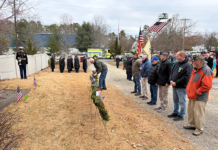
On the heels of the Spring Hill forest fire that blazed through more than 11,000 acres of the Pinelands in Burlington County recently, the New Jersey State Forest Fire Service is speaking out to inform residents on what they do and what to expect when it comes to fighting fires.
The Spring Hill fire sparked up a little less than a month ago on March 30, 2019. As the most significant forest fire we have seen this year, the blaze burnt through 11,600 acres of forest in Washington and Woodland Townships.
Shawn Judy, Assistant Division B Firewarden, said that the fire’s cause is still under investigation.
In the meantime, State Forest Fire Service officials held a press conference on April 24 to discuss the wildfire terminology, the process of prescribed burning, wildfire season, forest fires to date, and prevention as New Jersey heads into official wildfire season.

Terminology
Before delving into any new topic, it is beneficial to know the terminology. Trevor Raynor of the State Forest Fire Service fleshed out some of the common terms thrown around when people talk about forest fires.
When you hear a fire described as “contained,” this means that “forward progress has stopped but it has the potential to escape,” said Raynor.
A “controlled” fire is a fire that is contained on all sides, the perimeter has been stopped from spreading, but it is still “smoldering internally.”
A fire that is “out” is not usually labeled as such until the area sees a major rainfall, Raynor explained. “Out” fires signify that there is no active smoking or burning on any branches, stumps, etc. in the wildfire area.
Wildfires are not typically reported until they become significant. According to DEP Assistant Commissioner for Natural and Historic Resources Ray Bukowski, a significant fire is one that has reached 50 acres or more, or is a threat to the structures near it.
A 100 acre fire signifies a “major fire.”
Prescribed Burning
Over the past few weeks you might have noticed fire officials stationed along the roadside while a blaze heats up along the forest floor on major thoroughfares such as Route 539 or Route 72. This is called prescribed burning.
“By using fire as a tool…that ultimately helps us to suppress fire,” and prevent fire from spreading, said State Forest Fire Service Firewarden Greg McLaughlin.
While this may sound a bit backwards, the forest fire service is actually helping our forests.
Prescribed burning season takes place from October 15 to March 15, said McLaughlin. This year, the forest fire service extended that time frame by a few weeks, making it a very successful one. The goal is to perform prescribed burning on approximately 20,000 acres of forest each year. This year saw 22,600 acres, he added.
These controlled burns are small, according to McLaughlin; about 75 percent reach a maximum of only 10 acres or less.
Prescribed burns target “ladder fuels” in order to eliminate the starting point for wildfires. Ladder fuels refer to the vegetation along the forest floor that allows a fire to travel upward from the ground, to low tree branches on canopy trees, to tree tops, McLaughlin said. Picture a fire starting in the shrubbery and spreading up tree trunks and branches –the name “ladder” fuels is a visualization of the process.
“We’re trying to break that connection,” said McLaughlin.
And it is no coincidence that the State Forest Fire Service chooses fall and springtime to perform these prescribed burns. Spring and fall seasons are peak wildfire season.
Peak Wildfire Season
According to McLaughlin, the spring wildfire season is much busier than the fall due to factors like humidity, heat, and wind.
In springtime, humidity is down which means foliage is dryer or has the potential to dry up quicker. The weather begins to heat up but the trees remain leafless, allowing for the sun to penetrate further into the forest. These are risk factors that combine to create what McLaughlin called a “high fire danger” day.
During the spring, the forest fire service takes a “direct attack” approach to tackling forest fire prevention, especially on high fire danger days.
To do this, they use a “build up index which is a cumulative drying indicator,” stated McLaughlin. If the index indicates increasing dryness over time, “we will put out people actively patrolling the woods.”
Normally, they will have people stationed in fire lookout towers to monitor from above. In the event of a high fire danger day, there will also be patrols on the ground.
The forest fire service builds all of their equipment in-house so that it is specialized to get into those tricky, hard-to-get-to spots in the woods in order to put out a fire. It is only for 35 days in the springtime that the department outsources for extra materials.
During this time, the forest fire service spends approximately $250,000 to afford aircrafts that can dump water on a fire. When it is peak time for wildfires, they need all hands on deck and then some.
Springtime is much more likely to see the spark of wildfires than summer, McLaughlin explained, because summer has more humidity and more rainfall. The wetness doesn’t allow the leaves to dry out as quickly.

2019 Fires & Prevention
This year to date, the State Forest Fire Service has responded to 331 fires. Of this number, only four or five were considered “significant” fires, said Bukowski (one of which was Spring Hill).
This number is significantly higher than what the department saw this time last year, which was approximately 200 fires (year to date). This was due in part to the fact that “last year was the wettest year on record,” Bukowski added.
As for this year, that is not the case. The department saw five reportable wildfires on April 23, 2019 alone.
In New Jersey, 95 percent of wildfires are caused by people, Bukowski said. The forest fire service is simply trying to spread awareness to the public about the reality of wildfires and wildfire prevention in order to reduce the overall risk.
Bukowski advises residents, “if you see smoke, or fire trucks, or fire personnel…have courtesy” and be aware.
“We want people to enjoy the outdoors but we [also] want to keep people safe and our forests green,” he added.
“Only You Can Prevent Wildfires”
As we head into 2019’s official wildfire season, it is important to note that this year also marks 75 years of wildfire prevention with the 75th anniversary of Smoky the Bear.
Smoky the Bear is the forest fire service’s national mascot who touts the famed catch phrase, “Only You Can Prevent Wildfires.”
While you yourself might not be a firefighter working to ward off major wildfires this season, there are plenty of things you can do to prevent fires from starting in your own backyard.
As Bukowski stated, 95 percent of fires are caused by people.
For more information on prevention how-to’s or the NJ State Forest Fire Service, visit state.nj.us/dep/parksandforests/fire/aboutus.html.






